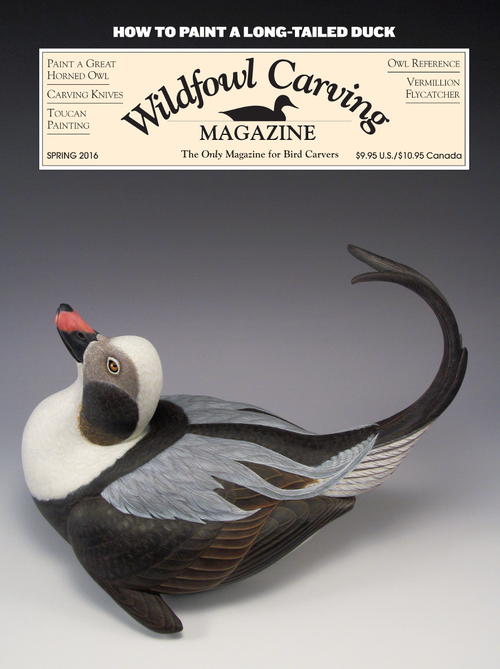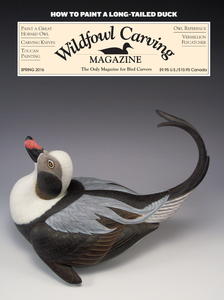Wildfowl Painting

I’ve heard it said many times. You can save a poor carving with good painting, and you can ruin a great carving with bad painting. We call this publication WILDFOWL CARVING MAGAZINE, but it should really be called WILDFOWL CARVING AND PAINTING. Adding the right colors in the proper places on the wood is just as important to the whole process as turning that piece of wood into something shaped like a bird. It ain’t easy, and a lot of carvers sometimes find painting to be a frustrating experience. If that applies to you, then help is on the way, right here in these pages. I’m tempted to call this our “Special Painting Issue,” because it really does focus pretty closely on that aspect of the art form. We have three really superb painters explaining how they do what they do. Laurie J. McNeil takes us step-by-step through the painting of a long-tailed duck smoothie, Keith Mueller explains how he made his toucan so colorful, and Al Jordan applies the paint to his great horned owl. So you really have three master classes in wildfowl painting, and they cover both oils and acrylics.
In her article, Laurie talks about the importance of developing your own style when you paint. I think you’ll get a good sense of how that works when you read these three demonstrations. All three carvers approach the task differently, and each one creates something indisputably unique.
But it’s not all painting this time out. Keith Hendrickson finishes up his look at the world of custom carving knives by asking some top carvers what they use. So remember: Before you can ruin a carving with bad painting, you have to carve it first. But whatever you do, do it with style!
Read the complete article in Wildfowl Carving Magazine's Spring 2016 issue.
Read NextOld School



